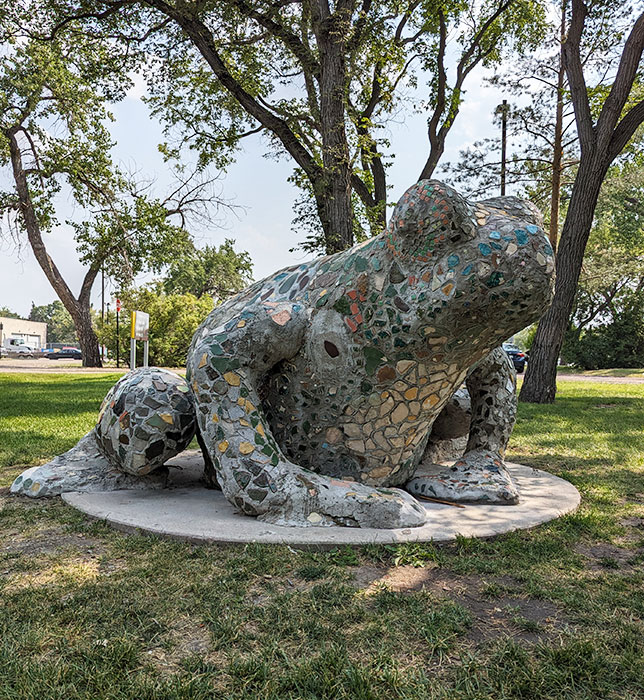When a famous statue of a frog on Regina’s College Avenue needed restoring recently, Alex King, curator and preparator for the University of Regina’s president’s collection saw an opportunity to honour a vital moment in the city’s art historical legacy.
Made of concrete decorated with ceramic shards, the 65-inch-tall sculpture was given life in 1971 by long time faculty member and ceramicist Joe Fafard, together with a group of his students. According to Ms. King, at that time artists were inspired by the counter cultural revolution to make playful interventions in public spaces all over the world.

“People were making stuff and putting it wherever without asking permission,” said Ms. King. “[Mr. Fafard and his students] literally just dragged it onto the lawn outside of the school of art where they made it and assembled it there.”
The statue’s design is an homage to David Gilhooly. A leading figure in the funk art movement, Mr. Gilhooly is known for rough-hewn, irreverent renderings of animals that are a far cry from the dainty tea cups and vases traditionally associated with the medium.
Less than a year after it was erected, the frog was the target of a dramatic kidnapping plot by student engineers from Saskatoon. They only managed to move the massive statue about 30 feet, but they did cause damage to the legs and scattered many of the tiles decorating its exterior. The Carillon, U of Regina’s student newspaper, recounts Mr. Fafard joking they should charge the rival university $1,000 for repairs, “[p]lus another million for the mental anguish this crime has created in Regina’s sensitive artistic community.”
Since then, the frog has become a treasured landmark. Ms. King first noticed it shortly after moving to town. “I remember asking a friend of mine, what is that?” she recalls. “I didn’t know that it actually fell under the purview of my role looking after the collection.”
Still, the stalwart amphibian was not built to stand for more than five decades. In the last few years, the chicken wire and wood armature around its hollow interior had begun to degrade causing the concrete exterior to cave in.
Mr. Fafard passed away in 2019, so the restoration was led by his nephew Phillip Tremblay who now runs the family foundry, Julienne Atelier Inc.
Restoration efforts included filling the statue with foam to make it more stable, as well as giving the exterior a facelift by adding new mosaic tiles.